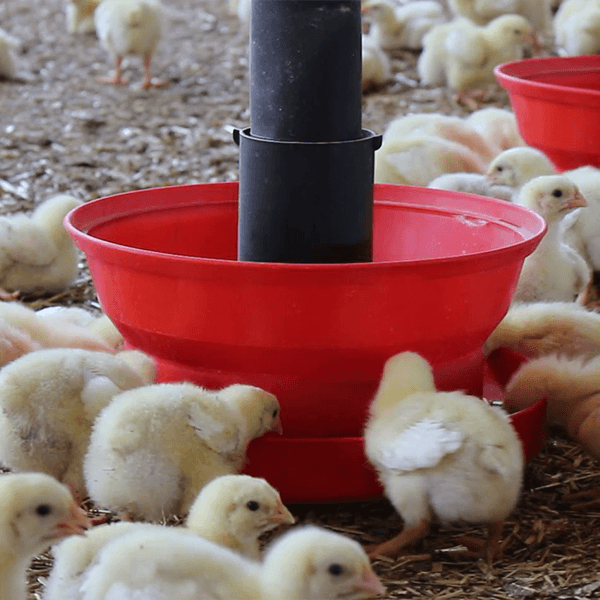In poultry farming, feed efficiency is a major variable to determine the cost of a kilogram of poultry meat (chicken, turkey ...). Depending on the country and species concerned, the proportion of feed in a broiler’s ration ranges from 40 to 70% of the cost of production. The Feed Conversion Ratio, which varies depending on the type of production applied, is always a very helpful benchmark to determine the profitability of a farm. Should one aim to increase the revenue of their poultry enterprise, it is important to know how to improve the Feed Conversion Ratio and how to reduce the feed costs.
Technical and economic assessment and monitoring variables in poultry production
The feed conversion ratio (FCR) is the amount of feed ingested by an animal which can be converted into one kilo of live weight. This definition also applies to a single-age poultry flock held in an enclosed house. It is important that this house contains an indication of the amount of feed that has been eaten. The end of a rearing cycle is a good opportunity to undertake the technical-economic balance sheet of the cycle taking account of the following parameters:
- The technical FCR is the total amount of ingested feed divided by the number of animals that have exited the house
- The economic FCR is the total amount of feed ingested divided by the weight of poultry animals that can be accepted at the slaughterhouse. That is to say that the weight of seized meat is deducted from the total weight of goods.
- The corrected FCR at fixed weight is the average ratio of different flocks considering that they have all been slaughtered at the same weight. In other words, these animals are all brought down to the same weight through calculations.
- The corrected FCR at fixed age is determined by estimating the weight that these chickens might have reached at the same age, depending on what they have consumed.
The FCR and hence, the amount of feed ingested, are the major variables that can help to set the cost of a poultry animal. Depending on the species and countries considered, the share of feed makes up 40 to 70% of cost production. Poultry, including broilers, remain the species whose FCR is the lowest (it can be as low as 1.35). Unlike other species, poultry are not religiously banned; this is why their consumption has no impediment and their yearly growth rate averages 3%.



